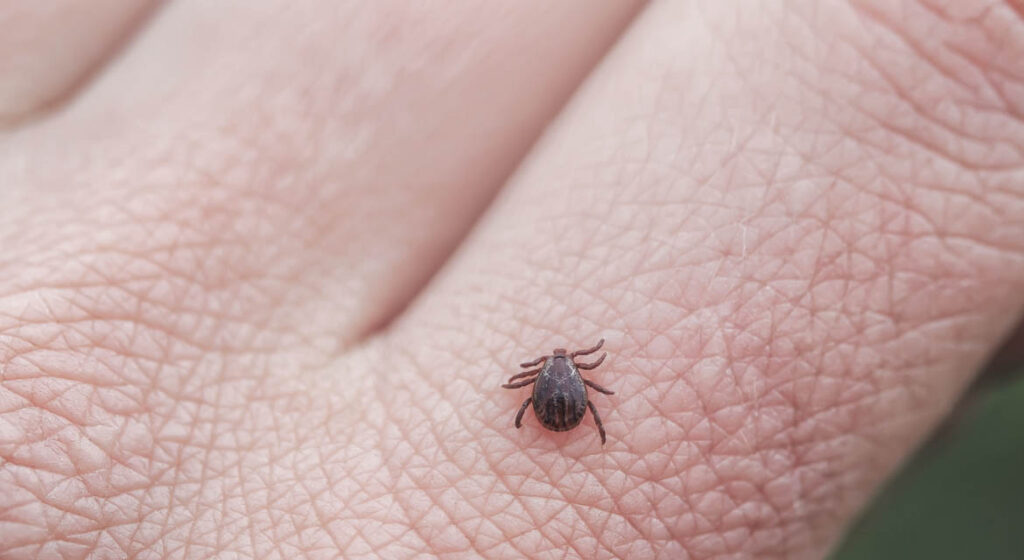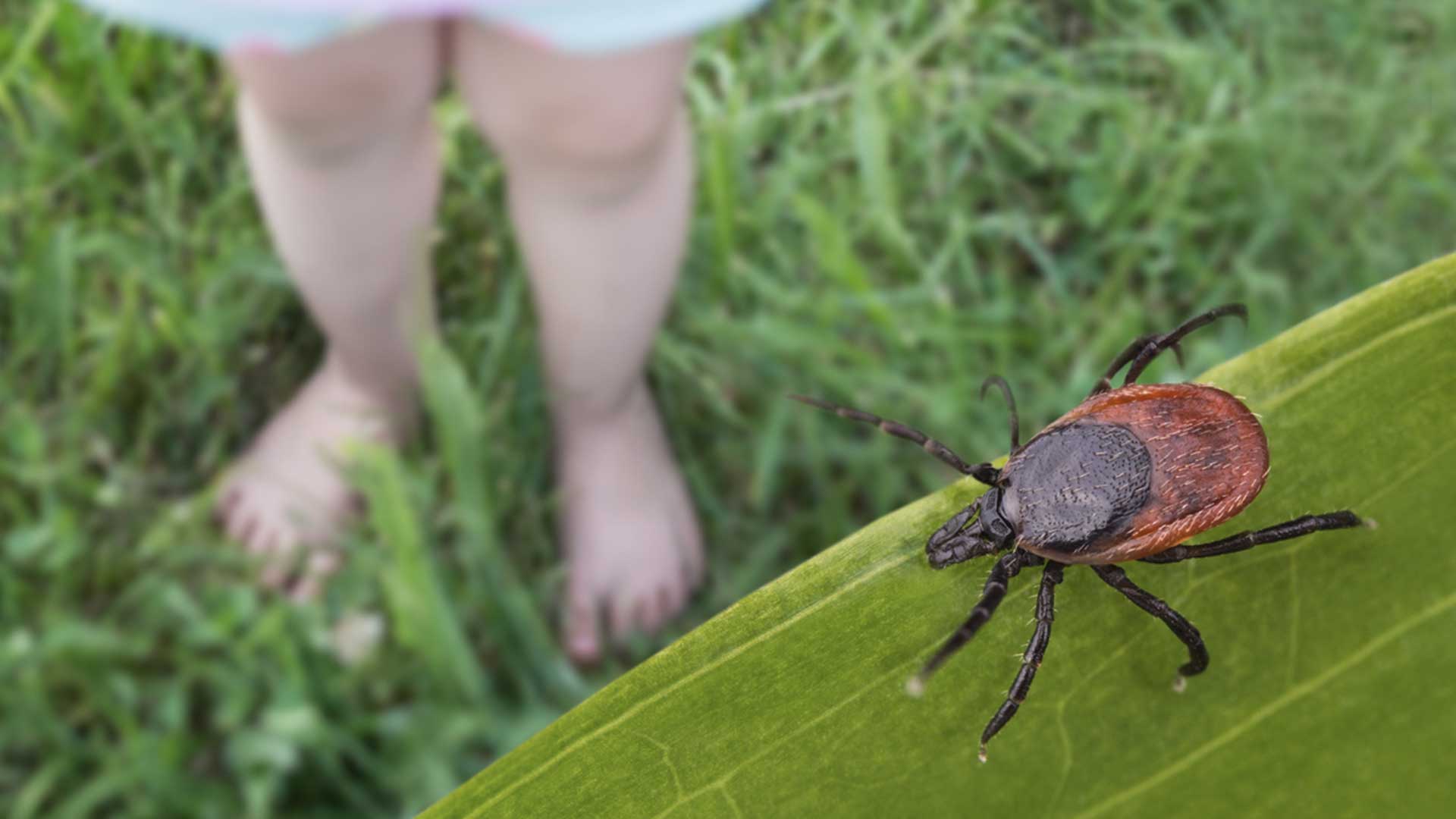
The Importance of Proper Tick Removal for You and Your Pet
Proper tick removal is vital for minimizing the risk of tick-borne diseases in both you and your pet while preventing infection and irritation at the bite site. By using the appropriate technique, such as fine-tipped tweezers, you can ensure complete tick extraction and reduce the chance of mouthparts remaining in the skin, promoting the well-being of both you and your pet. Here are three key points to keep in mind while removing a tick:
- Proper tick removal is crucial to reduce the risk of tick-borne diseases for both you and your pet.
- Removing ticks promptly and correctly helps prevent infection and irritation at the bite site.
- Utilizing the proper removal technique, such as using fine-tipped tweezers, ensures complete tick extraction and minimizes the chance of mouthparts remaining in the skin.
Tick Removal Overview
Ticks are pesky creatures that can cause problems if not removed properly. These tiny arachnids feed on the blood of mammals, including humans and pets, and can transmit diseases like Lyme disease, Rocky Mountain spotted fever, and ehrlichiosis. These diseases are why you must know how to remove a tick from your body or pet.
Removing ticks may seem simple, but it is essential to do it correctly to prevent infection and skin irritation. If you do not remove the entire tick, including its head, you can leave behind the mouthparts of the tick causing infection.
Several safe and effective methods exist to remove ticks from your body or your pet.
One method is to use fine-tipped tweezers to grasp the tick as close to the skin surface as possible and pull it upward with steady pressure. A tick removal tool is another method of tick removal – a tick removal tool is a tool specifically designed for this purpose.
When removing a tick from your pet, use gloves or tissue paper to avoid contact with the tick’s blood or saliva since they could contain harmful pathogens. Be sure not to twist or jerk a tick during removal because it can cause its mouthparts to break off and remain in your pet’s skin.
Prevention is Key: How to Help Prevent Ticks and Their Negative Consequences
Tick-borne diseases are rising in the United States, with studies showing increasing cases of Lyme disease and other tick-borne illnesses.
Tick-borne diseases are a growing concern across the United States. Studies have shown that there has been a significant increase in cases of Lyme disease over the past few years. Other tick-borne illnesses like Rocky Mountain spotted fever, ehrlichiosis, and anaplasmosis have been more frequent too.
These diseases can cause serious health problems if left untreated. Symptoms include fever, fatigue, joint pain, and long-term health issues such as chronic arthritis or neurological problems.
Take preventative measures to avoid tick bites to protect yourself and your loved ones from tick-borne diseases.

Truly Nolen GUARANTEE
If you’re not completely satisfied, you’ll get a full refund on your most recent service with our 100% money back guarantee.

$50 Off Year Round Pest Control
Truly Nolen is a family-owned company with 85 years of experience providing the best pest control. If you’re not completely satisfied, you’ll get a full refund on your most recent service with our 100% money back guarantee.
Simple steps like wearing long sleeves and pants, using insect repellent, and checking yourself and your pets after spending time outdoors can help reduce the risk of tick bites and the diseases they transmit.
There are several simple steps you can take to help prevent tick bites:
- Wear protective clothing: When spending time outdoors in wooded areas or places where ticks may be present, wear long-sleeved shirts and pants to cover up exposed skin.
- Use insect repellent: Apply an EPA-approved insect repellent containing DEET or picaridin before going outside. Be sure to follow the instructions on the label carefully.
- Check for ticks regularly: After spending time outdoors, thoroughly check your entire body for any ticks that may have attached themselves. Pay close attention to the areas behind your knees, around your waistline, underarms, neck, and hairline.
- Remove any attached ticks promptly: If you find a tick attached to your skin or pet’s skin, use fine-tipped tweezers or special tick removal tools for removal.
You can also deter ticks by keeping your yard clean and free of debris that may attract them. Keep grass cut short, remove leaf litter, and trim bushes and trees to let in more sunlight.
By taking these simple preventative measures, you can help protect yourself, your family, and your pets from tick bites and the diseases they can transmit.
Tips for Checking Your Pet’s Fur for Ticks
Regularly search your pet’s fur for any bumps or lumps.
Regularly checking your pet’s fur for ticks is one of the most important things you can do to prevent tick-borne illnesses in your pets. Ticks can cause many health problems if not removed promptly. To check your pet’s fur for ticks, use your fingers to feel and check for any bumps or lumps. Pay extra attention to areas like the ears, neck, and underbelly where ticks commonly attach.
Ticks can be difficult to spot because they are small and often blend in with your pet’s fur. However, by running your hands over their body, you can feel any bumps or lumps that could indicate the presence of a tick. If you find a tick on your pet, remove it quickly to reduce the risk of disease transmission.
Use your fingers to feel through the fur and check for any bumps or bumps.
When checking your pet’s fur for ticks, use your fingers rather than just relying on visual inspection because ticks can be small and hard to see with the naked eye. By feeling through your pet’s fur with your fingers, you can detect even tiny ticks that might go unnoticed.
To begin checking your pet for ticks, run your hands over its head and down its back. Be sure to check all areas of their body, including under their legs and around their paws – make sure you are gentle when checking around sensitive areas like ears or eyes so as not to hurt your pet.
Pay extra attention to areas like the ears, neck, and underbelly where ticks commonly attach.
Ticks tend to gravitate toward warm spots on an animal’s body, like the armpits, groin, and ears. Therefore, when checking your pet’s fur for ticks, pay extra attention to these areas. In particular, check around the base of their ears and under their chin, as these are common spots for ticks.
Another area that you should pay close attention to is your pet’s underbelly. Ticks often attach themselves in this area where the skin is thin and easy to penetrate. Lift up your pet’s legs and check between their toes since ticks can also hide there.
How to Check Your Dog for Ticks (A Vet’s Expert Opinion)
According to Dr. Sarah Wooten, a veterinarian with more than ten years of experience, there are a few things you should keep in mind when checking your dog for ticks:
- Start at the head: Check your dog for ticks around their eyes, ears, nose, and mouth.
- Move down the body: Work your way down from the head towards the tail – make sure you check all areas, including armpits and groin.
- Use a tick comb: A tick comb is a tool designed for tick removal.
- Check for ticks frequently: Check your dog regularly for ticks, especially after being outside in wooded or grassy areas.
By following these tips and vigilantly checking your pet’s fur for ticks, you can help reduce their risk of tick-borne illnesses such as Lyme disease or Rocky Mountain Spotted Fever. If you do find a tick on your pet, be sure to remove it promptly.
Step-by-Step Guide: How to Safely Remove a Tick from Your Body or Your Pet
Use Fine-Tipped Tweezers to Grasp the Tick
The first step in safely removing a tick from your body or pet is to use fine-tipped tweezers to grasp the tick as close to the skin’s surface as possible. Avoid squeezing, twisting, or crushing the tick’s body during removal, as this can increase the risk of infection.
Gently pull upward on the tick using steady, even pressure. Do not jerk or twist the tick, as this can cause its mouthparts to break off and remain lodged in your or your pet’s skin. If this happens, remove the remaining parts with tweezers.
Clean the Bite Area and Your Hands
After removing the tick, clean the bite area and your hands with rubbing alcohol or soap and water – this helps to reduce your risk of infection.
If you remove a tick from your pet, keep an eye on your pet for any signs of illness or infection following tick removal.
Seek Medical Attention if Necessary
In some cases, you may need to seek medical attention after removing a tick from your body or pet – this is especially true if you develop symptoms such as fever, rash, headache, muscle pain, joint swelling, or fatigue within a few weeks of a tick bite.
Similarly, if you notice any unusual behavior or symptoms in your pet after removing a tick (such as lethargy, loss of appetite, or lameness), contact their veterinarian.
Follow Additional Precautions for Tick Prevention
There are several precautions you can take to reduce your risk of being bitten by ticks (or having ticks latch onto your pets):
- Wear long-sleeved shirts and pants when spending time outdoors.
- Use insect repellent that contains at least 20% DEET.
- Stay on trails when hiking or walking in wooded areas.
- Check your body and pets for ticks after spending time outdoors.
- Keep your lawn trimmed and free of leaf litter, brush piles, and other tick habitats.
You can help reduce your risk of tick-borne illnesses by following these precautions and knowing how to remove a tick safely. Contact your healthcare provider or veterinarian for guidance if you have any concerns about ticks or tick bites.
Alternative Methods: Removing Ticks without Tweezers
Dental Floss as an Effective Tick Removal Option
Tweezers are often the go-to tool for many people. However, if you don’t have tweezers or are looking for alternative tick-removal methods, dental floss can be a surprisingly effective tick-removal option.
To use dental floss to remove a tick from your body or your pet’s body, follow these steps:
- Tie a knot in the dental floss near the end.
- Loop the floss around the tick’s head as close to your or your pet’s skin as possible.
- Pull up on both ends of the floss until you remove the tick.
The benefit of using dental floss is that it allows you to get very close to the skin and ensure that you’re removing the entire tick, including its head. This method is helpful for ticks that have burrowed deep into the skin and may be difficult to remove with tweezers.
Using a Sterilized Needle to Remove a Tick
Another alternative method for removing ticks without tweezers involves using a sterilized needle. This method can be helpful if you don’t have access to other tools or are dealing with a smaller tick.
To use a sterilized needle to remove a tick from your body or your pet’s body, follow these steps:
- Sterilize the tip of the needle by holding it over an open flame until it glows red
- Use the needle tip to gently lift up one side of the tick.
- Continue lifting until you can grasp hold of the tick with your fingers
- Pull firmly and steadily until you’ve removed all parts of the tick from your or your pet’s skin
It’s important to note that this method requires some skill and precision since it can be tough to grasp the tick with your fingers. However, if done correctly, it can be an alternative to using tweezers.
Soaking the Tick in Rubbing Alcohol
If you’re looking for an easier way to remove a tick without using tweezers or other tools, soaking them in rubbing alcohol can be an effective removal option.
To use this method, follow these steps:
- Soak a cotton ball in rubbing alcohol.
- Place the cotton ball on top of the tick and hold it there for a few minutes.
- After a few minutes, remove the cotton ball and gently pull up the tick with your fingers or another tool.
The benefit of this method is that it can kill the tick and loosen its grip on your or your pet’s skin making safe tick removal easier.
Using Tick Removal Devices
There are several devices on the market to consider if you’re looking for an alternative to tweezers designed for removing ticks.
Tick removal devices typically come in two varieties: tick removers and tick removal tools. Tick removers are small plastic devices that allow you to scoop up ticks from your or your pet’s skin without squeezing them or leaving any parts behind. Tick removal tools are similar but often have more complex mechanisms that allow you to twist or rotate them as you remove the tick.
Some popular options include:
- The Tick Twister
- The Ticked Off Tick Remover
- The O’TOM Tick Twister
- The ZenPet Tick Tornado
Using one of these devices can be an effective way to safely and easily remove ticks from your body or your pet’s body without relying on tweezers.
Disposal and Disinfection: Properly Killing and Disposing of Ticks After Removal
Detaching the Tick Carefully
Ticks are blood-sucking parasites that can transmit diseases to humans and pets. When you find a tick on your body or your pet’s fur, it is essential to remove it immediately to prevent the spread of diseases. To detach the tick carefully, use tweezers or a tick removal tool – avoid using your fingers as this may squeeze the tick’s body, causing it to release more pathogens into your bloodstream or your pet’s system.
When using tweezers or a tick removal tool, grasp the tick as close to the skin as possible without squeezing its body. Gently pull upward with steady pressure until the tick detaches from the skin. Do not twist or jerk the tick since this may cause its mouthparts to break off and remain in the skin.
Disinfecting the Bite Area
After removing the tick, disinfect the bite area with isopropyl alcohol or soap and water. Isopropyl alcohol is an effective disinfectant that can kill bacteria and viruses on contact – it also helps reduce inflammation and itching caused by tick bites.
Soap and water are also effective in cleaning wounds caused by ticks. Use mild soap and warm water to clean the bite area thoroughly. Rinse with clean water and pat dry with a clean towel.
Killing Ticks
Killing ticks after removal is crucial in preventing their reattachment to other hosts. There are several ways to kill ticks safely:
- Drowning in Rubbing Alcohol – Place removed ticks in a sealed container filled with rubbing alcohol for at least 24 hours before disposal.
- Flushing Down The Toilet – Drop removed ticks in the toilet bowl, then flush them down.
- Wrapping In Tape – Wrap removed ticks tightly in tape, then dispose of them properly.
It is important to note that you should not crush or squish ticks as they may cause the release of bacteria and viruses into the air and increase the risk of infection or disease transmission.
Proper Disposal of Ticks
Disposing of ticks properly is essential in preventing their reattachment to other hosts or surfaces. Here are some ways to dispose of ticks safely:
- Seal them in a plastic bag – Place removed ticks in a sealable plastic bag and throw it away in an outdoor trash bin.
- Burn them – If you can access an incinerator, burn the ticks immediately after removal.
- Bury them – Dig a hole at least six inches deep and bury the ticks and any materials used during tick removal.
Proper disposal of ticks reduces the risk of reattachment and helps prevent diseases from spreading.
Keeping Yourself and Your Pet Safe from Ticks
Ticks can be a significant health concern for you and your furry friends. These pesky parasites can carry diseases that can cause serious harm to you or your pet’s health. Take preventative measures to avoid tick bites, and know how to remove them properly if they attach themselves.
Prevention is Key: How to Help Prevent Ticks and Their Negative Consequences
The best way to protect yourself and your pet from ticks is by taking preventative measures, including avoiding areas where ticks are, like tall grasses or wooded areas. Be sure to use insect repellent on yourself and a pet-safe repellent on your pets before venturing into these environments.

$50 Off Year Round Pest Control
Truly Nolen is a family-owned company with 85 years of experience providing the best pest control. If you’re not completely satisfied, you’ll get a full refund on your most recent service with our 100% money back guarantee.
Frequently Asked Questions
How do I prevent tick bites and reduce the risk of tick infestations?
To prevent tick bites and infestations, it is recommended to use insect repellents containing DEET, wear long sleeves and pants in wooded or grassy areas, perform thorough tick checks after outdoor activities, keep your lawn well-maintained, and create a barrier between wooded areas and your yard.
What are the symptoms of tick-borne diseases, and when should I seek medical attention?
Symptoms of tick-borne diseases vary, but common ones include fever, rash, fatigue, muscle aches, and joint pain. If you experience these symptoms after a tick bite or potential exposure, especially in an area where tick-borne diseases are prevalent, it is advisable to seek medical attention promptly.
How can I safely remove a tick from my body or my pet?
To safely remove a tick, use fine-tipped tweezers, grasp the tick as close to the skin surface as possible, and pull upward with steady pressure. Avoid twisting or jerking the tick, and clean the bite area with soap and water. If removing a tick from a pet, consult a veterinarian for proper guidance. Learn more about ticks
Can ticks infest my home, and how can I eliminate them?
Yes, ticks can infest homes, especially if they latch onto humans or pets indoors. To eliminate ticks, thorough cleaning, vacuuming, and washing of infested areas is essential. Additionally, professional pest control services may be necessary to ensure complete eradication and prevent future infestations. Learn More!
What are the risks of tick bites and tick-borne diseases?
Tick bites can transmit various diseases, such as Lyme disease, Rocky Mountain spotted fever, babesiosis, and anaplasmosis, among others. These diseases can cause a range of symptoms, from mild to severe, and may lead to long-term health complications if left untreated. Prompt diagnosis and appropriate treatment are crucial in managing tick-borne diseases.

